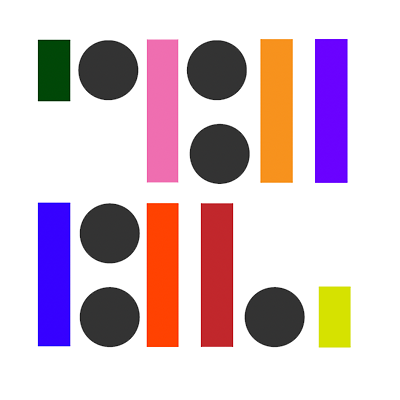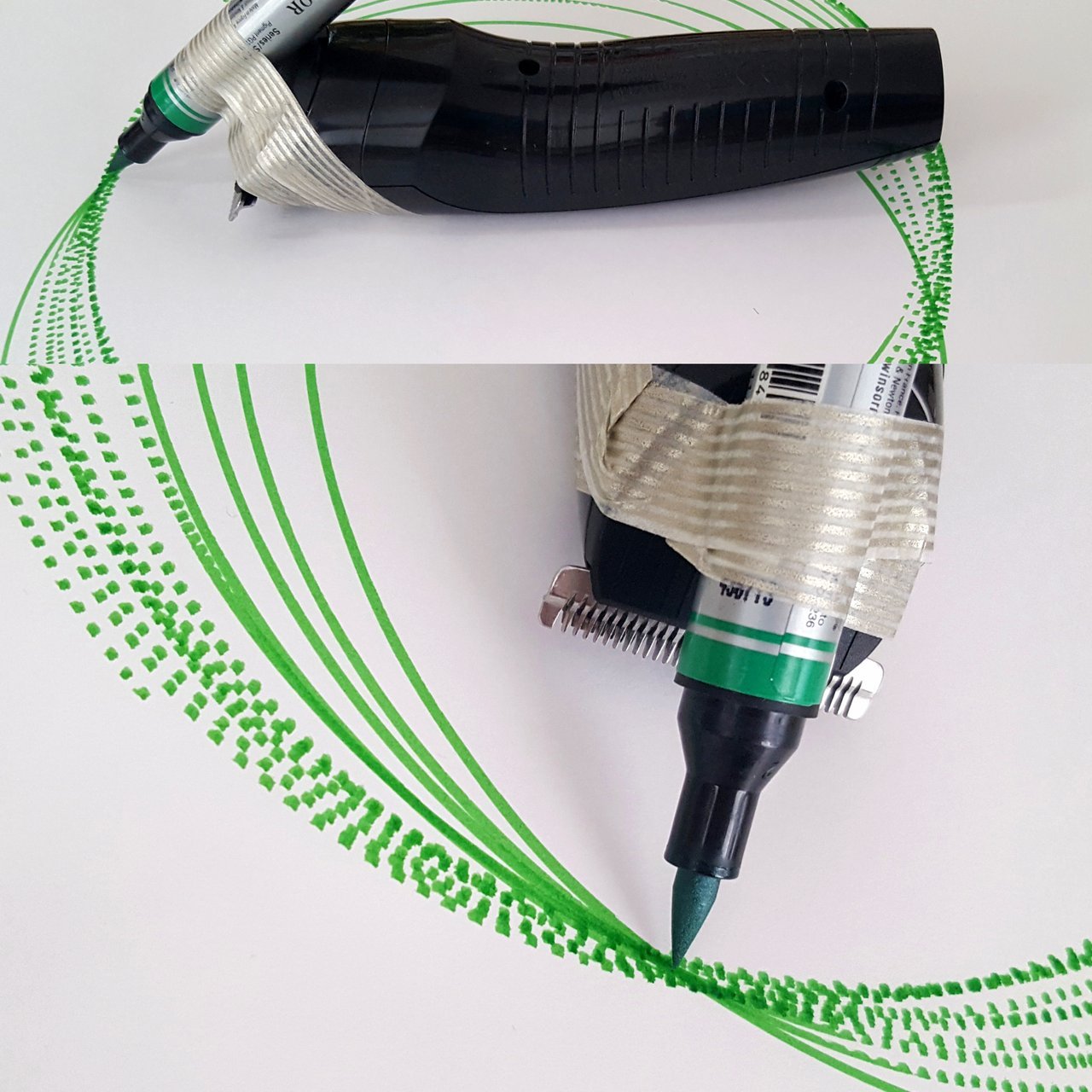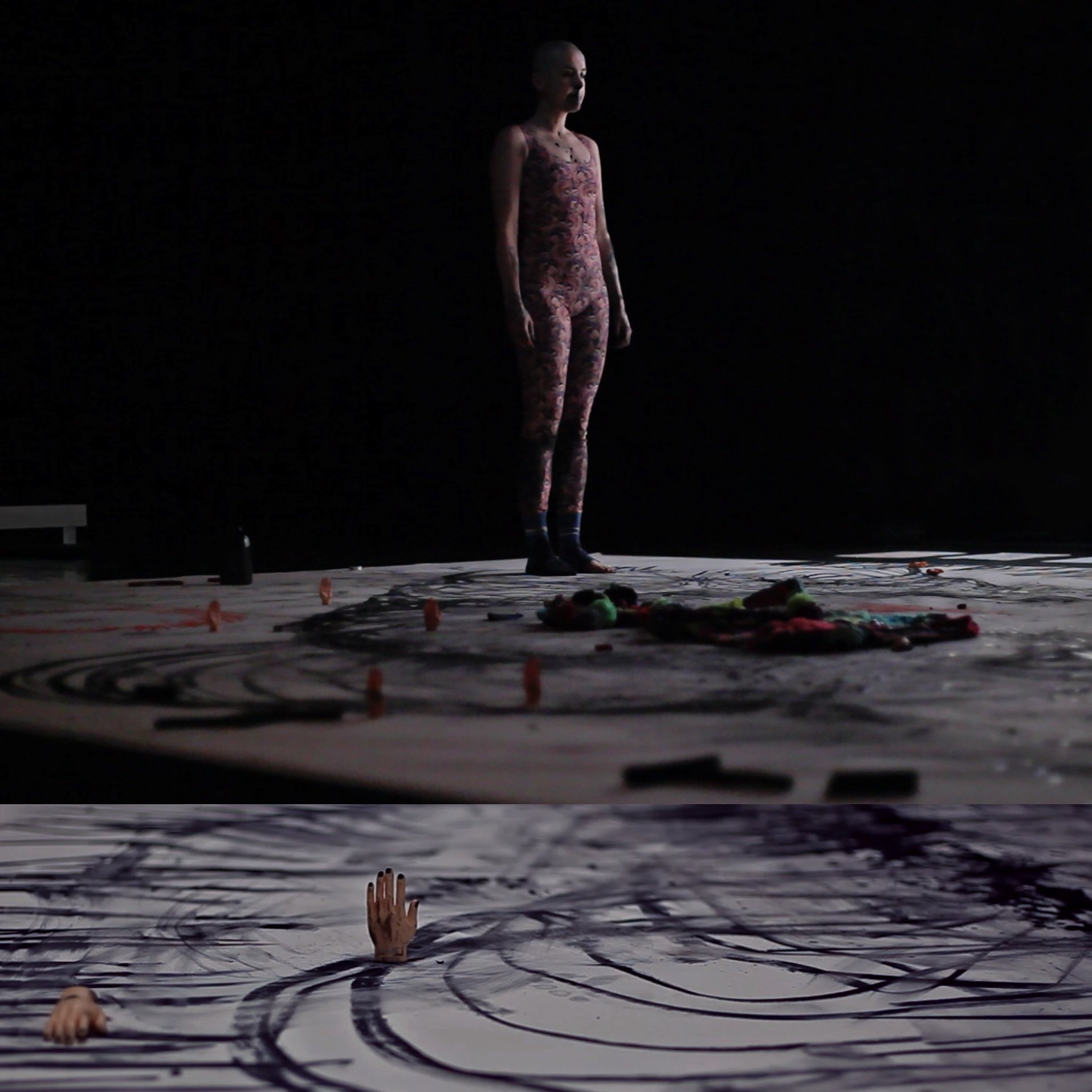Meet Yaron
Yaron Maïm is a brilliant Media artist and Creative Technologist currently based in Berlin. We got to meet earlier this year after they joined in on some of our courses. Their illustration and 3D work is gorgeous and we were thrilled when they were interested in teaching a generative art axidraw plotter / drawing machine class with us in-person at School of Machines!
The following is a interview in the lead-up to their course, Queering the Drawing Machine, which begins next Thursday, 19. October.
Hi Yaron. I’m super excited that you will be teaching this course! What is your background exactly? When did you first notice that you are an artist?
With my chosen sister, as kids, we transformed the elevator into a spaceship, guiding the neighborhood kids into her place where a DIY puppet theater was about to take them on adventures made of laughter, suspense, and cuteness. We used toys, beds, tables, chairs, blankets, and everything we could find that created magic. We were building imaginary worlds together with the simple intention of having fun and making our guests happy. It was about collaborating, hosting, and dreaming. This experience taught me the power of imagination and how it can bring people together, inspiring hope and a bit of relief from everyday life.
This same spark as in the elevator-spaceship usually occurs when I showcase or discuss my drawing robot! I feel a sense of being in the right place when I see joy in the eyes of others and can participate in it. It always makes me smile and gives me the strength to keep on making art every day.
Creating playful stories early on (the narrative approach is only one specific way to make art) led me to invent concepts, and develop more or less complex ideas, procedural approaches, and idiosyncratic systems. This added to the joy of developing all kinds of sensorial experiences. My sensitivity to light, sounds, textures, and smells quickly informed my desire to share what I perceive. It’s a way to relate to others and ask „What do you see?“. Making art is an effort of observation and tuning in with aspects of reality that tend to be unseen. This sharp attention to things that normally remain unseen lives upstream of imagination.
Many years later after the invention of the elevator-spaceship that I described above, I did a BA and an MA in Fine Arts/Critical Curatorial Cybermedia Studies from HEAD, Geneva University of Art and Design (2012), an MA in Solo/Dance/Authorship from HZT, Inter-University Centre for Dance, UdK, University of the Arts, Berlin (2018), and a Diploma in VFX/3D Animation from SAE Institute Berlin (2022).
What are you most excited to explore with others in your upcoming class?
First, I am excited we’ll get our hands on a pen plotter! Although a wide range of artists use pen plotters today, it’s not easy to have access to this kind of machine. And something is mesmerizing when watching (and listening to) a robot tracing lines. It’s an ideal device to learn about digital craftsmanship and concepts such as vectorization or proceduralism. We’ll use an Axidraw for our upcoming class because it offers precision and ease of use. I’ll share an extensive list of examples of art made by drawing machines and we’ll have fun doing tests with the pen plotter by changing simple parameters related to traditional works on paper: paper weight, grain, brightness, ink, fine point, fountain pen, angle to hold the pen, etc.
We'll kick off with an intriguing prompt: "What's around you that you could transform into a DIY drawing machine?" This will ignite our imaginations and turn us into playful inventors. We'll discuss post-anthropocentric concepts by relying on a learning-by-doing approach and questioning the agency of objects in the artistic process. We’ll pay attention to the interactions between all the elements in the creative process. We'll ponder the age-old question – who's the real artist here, the machine or us? The idea is to lose assumptions about who produces and how.
I’d like to explore alternative herstory and transtory. Pen plotter history could relate to the pendulum that traces lines as a recording device. Although we might want to look for a male-identified scientist seen as a pioneer, for example, Andrea Bina in Italia in the eighteenth century, I’d like to dream together and think about who could have used the pendulum. I think about the witches. :)
I am dedicated to providing the right conditions for creative collective moments. Generative art doesn't always require coding — it’s more about the way of thinking. We'll draw inspiration from the concept “machine imaginaire” by the trailblazer Vera Molnar, who has created algorithmic art using computers and pen plotters since 1968, and who initially didn’t have a technical background.
Vera Molnár, heralded as a pioneer of early computer art. Portrait, 1961. Photo: François Molnàr. © Atelier Molnàr
We’ll invent plotting workflows by juxtaposing two types of thinking: crafting intuitively with the resources at hand and delving into custom procedural approaches, starting from the simple and gradually moving towards the complex. We'll closely observe and dissect these interactions: we'll write the rules, execute them, and trace the generated output.
This class is called Queering the Drawing Machine. What does queering mean to you, and why is it important to look at the world and our work from different perspectives?
“Queering” means challenging the norms. I am a trans and queer person and believe in the power of art for social change through sharing personal stories. My story is about collaborating with machines to foster values of solidarity, empathy, and collective liberation. Passionate about making the art/tech fundamentals accessible, I deeply value knowledge transmission.
While there is a wealth of computer graphics and digital fabrication tutorials available online, the field of creative technology still struggles with inclusivity, with LGBTQIA+ (Lesbian, Gay, Bisexual, Trans, Queer, Intersex, Asexual), women, non-binary, GNC (Gender Non-Conforming), and BPOC (Black People and People Of Color) individuals being underrepresented. This issue extends to STEM (Science, Technology, Engineering, Math) industries as a whole.
Participating in a class led by a trans teacher and their drawing robot creates a safer space for accessing the information necessary in the learning process. I aim to welcome participants from diverse backgrounds, offering support and fostering joy in the collaborative exploration of machines and human creativity.
Understanding the technical and artistic fundamentals that enable efficient learning processes is embedded with the notions of diversity. Addressing inclusion issues improves adaptation skills for everyone; it facilitates collaborative workflows and faster navigation between techniques, programs, models, and languages.
How did your interest in drawing machines come about?
It all began as an old dream, one that evolved in various forms due to the limitations of directly working with such machines. During my time studying performance art and dance, I delved deep into the process of drawing itself. I pondered the concept of authorship, the idea of incompleteness, the physical location of a drawn line, and the sense of control or lack thereof. My curiosity led me to explore where a drawn line truly ends. I experimented by drawing on my own body, with my tongue, on the wall, outside, and with others.
Naturally, I gravitated towards using machines like an electric shaver or a DIY motion-tracking and projection device to trace lines.
When working with machines, I often found myself questioning the somatic aspects of the process. It became clear that engaging the entire body and maintaining a tangible, physical connection were essential when dealing with abstract concepts. In our upcoming class, we'll explore the creative possibilities of this approach, drawing from my experiences in visual, performance, and media art.
When I started working with computer graphics, I discovered the limitless creative potential of developing a workflow that transitions between 2D and 3D, screen and paper. In general, my artistic intention is to un/build systems for variation — a drawing machine is a long-awaited partner in crime to connect all the dots! I view all elements, whether human or non-human, as collaborators with agency in the creative process. By the way, my pen plotter, affectionately named TUMTUM, has googly eyes. :) The name TUMTUM is a nod to one of the eight genders in ancient Jewish texts.
The playfulness of drawing machines opens up a wide range of experimentation at the intersection of generative art, print media, and performance art. Generative art can be likened to a musical score, created with just a few rules and an object that can independently follow those rules. Print media ranges from stamps crafted from erasers to intricate silkscreen-printed layered patterns. And there's the live and interactive aspect of performance art that engages with an audience. It’s this multiplicity that fuels my passion for working with drawing machines.
Thank you, Yaron! Your work is so vivid, playful, and empowering. Really looking forward to this course! <3
****
To learn more about Yaron’s work, visit them on instagram here.
For more information and to sign-up for Queering the Drawing Machine, their 5-week in-person class, which begins 19. October at School of Machines in Berlin, click here.










